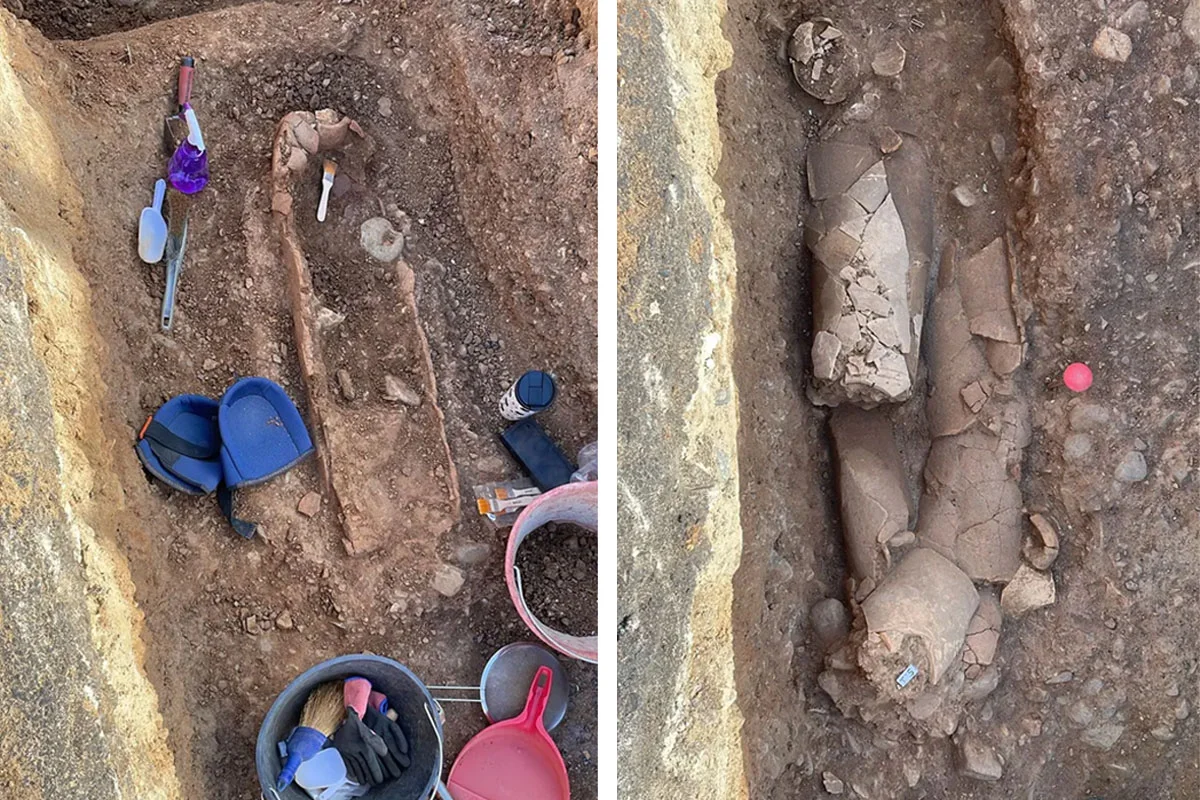A Punic necropolis dating to the 4th or 3rd century BC has been discovered during gas construction works in Sestu, a Comune in Sardinia, Italy.
During antiquity, Carthage extended its influence into Nuragic territories in southern Sardinia, seeking to exploit the island’s rich mineral resources and dominate the fertile plains of the Campidano.
By 509 BC, Carthage had established control over the southern and central-western regions of Sardinia, maintaining its dominance until the Roman invasion in 238 BC, which along with Corsica became a province of Rome.
While installing a new gas distribution network in Sestu, Itargas workers uncovered an amphora and promptly alerted the local authorities from the Archaeological Inspectorate.
Excavations unearthed a total of six well-preserved amphorae containing human burials, which were found alongside ancient ceramics deposited in pits carved into the natural bedrock. According to experts, the practice of burying the deceased in amphorae is a common Punic funerary practice known as Enchytrismos, particularly for newborns or young children.
Enrico Trudu, an archaeologist specialising in the Phoenician-Punic era, said: “We are still in the excavation phase, but I can confirm that in several places, contexts have appeared that can be clearly attributed to Punic cemeteries.”
“Specifically, we have found six amphorae containing human bones, some of which belong to children, but also to adults, which we speculate date back to the third or fourth century BC. In addition, more ceramic material has appeared in another area that we are currently excavating,” added Trudu.
The necropolis is located beneath a modern road and is surrounded by industrial and commercial buildings. Trudu explained that fully uncovering the necropolis is not feasible, but it is crucial to analyse and preserve what has been found.
Header Image Credit : Porrà
Sources : L’Unione Sarda





